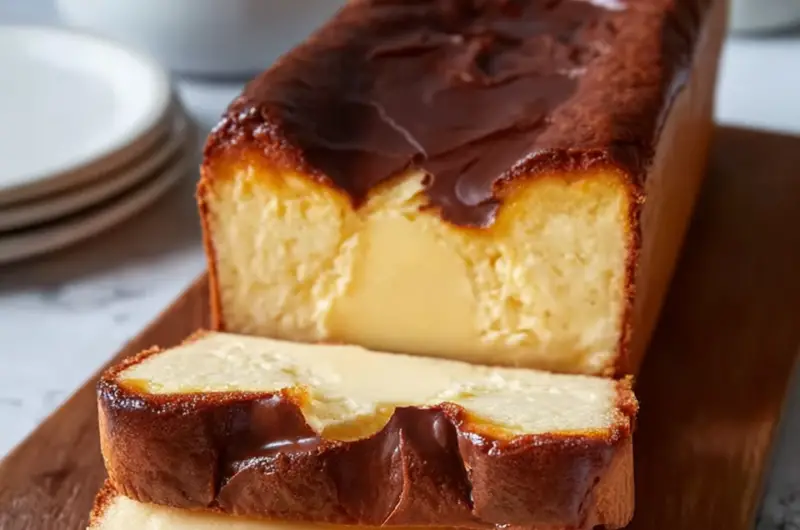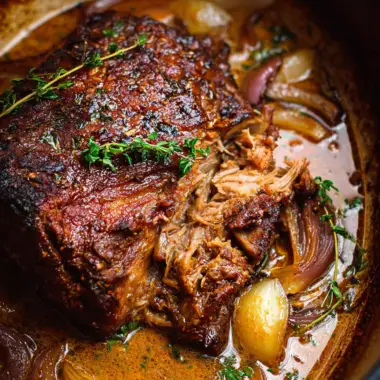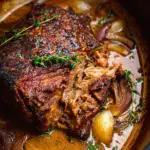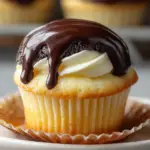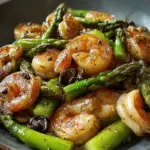Introduction to Burnt Basque Cheesecake in a Loaf Pan
The Burnt Basque Cheesecake has gained a cult following in recent years, beloved for its unique combination of a caramelized top and a creamy, custard-like center. This modern adaptation, baked in a loaf pan, maintains all the charm and richness of the original while offering easier slicing and serving. The contrast of the nearly burnt top and the silky interior creates a flavor profile that is bold, luxurious, and surprisingly simple to achieve at home.
Baked at high heat to encourage deep browning and a crackly crust, this cheesecake is intentionally imperfect. There’s no need to worry about water baths, cracking, or fussy presentation. The loaf version makes it more accessible to home bakers, requiring just a handful of ingredients and minimal prep time.
The Origins of Basque Cheesecake
The Burnt Basque Cheesecake, also known as “Tarta de Queso,” hails from the Basque region of Spain. It was first made famous by La Viña, a small restaurant in San Sebastián, which began serving this unconventional cheesecake in the early 1990s. What set it apart from traditional cheesecakes was its simplicity and high-heat bake, resulting in a burnt exterior and an almost soufflé-like center.
Unlike American-style cheesecakes, which rely on a graham cracker crust and require precise baking techniques to avoid cracking, the Basque version is crustless and intentionally caramelized on top. It was a revolutionary take on the dessert that quickly earned admiration across Europe and beyond.
Why This Version in a Loaf Pan Works So Well
One of the main appeals of baking this cheesecake in a loaf pan is the convenience. Traditional Basque cheesecakes are often made in large round pans, resulting in cakes that can be difficult to slice evenly and serve. By using a loaf pan, the cheesecake becomes easier to manage, yielding beautiful uniform slices perfect for presentation or portion control.
The loaf pan also helps achieve a taller cheesecake with more defined structure and better height. Since the batter is thicker in the center, the jiggly custard-like interior becomes even more pronounced. It’s ideal for both casual servings and elegant dessert platters.
The Signature Burnt Top and What It Adds
The “burnt” component of the Burnt Basque Cheesecake isn’t just for appearance—it adds a deep, toasty flavor that balances the rich cream cheese filling. The high-temperature bake caramelizes the sugars in the batter and gives the top its signature crackled, dark brown finish. This provides a slight bitterness that offsets the sweetness and creaminess of the interior.
This contrast in textures and flavors is what sets the Basque Cheesecake apart from other cheesecakes. It isn’t overly sweet, making it perfect for those who appreciate subtlety and complexity in desserts.
Ingredients That Keep It Simple and Rich
This recipe requires only a few basic ingredients, each playing an essential role:
-
Cream Cheese: The star of the show, cream cheese provides richness and a slight tang.
-
Granulated Sugar: Helps create the caramelized top and sweetens the custard.
-
Eggs: Act as a binder and contribute to the creamy structure.
-
Heavy Cream: Adds silkiness and soft texture to the batter.
-
Vanilla Extract: Enhances the overall flavor with a warm, sweet aroma.
-
All-Purpose Flour: Helps lightly stabilize the mixture without making it dense.
-
Salt: Balances sweetness and boosts flavor depth.
These ingredients work together to form a batter that is fluid, luscious, and forgiving, allowing it to bake into something truly extraordinary with minimal effort.
What Makes Burnt Basque Cheesecake Healthier Than You Think
Despite its indulgent texture, this cheesecake is often lower in sugar and carbs compared to traditional American cheesecakes. Since it has no crust, there’s no added butter or refined grains from graham crackers. The focus is on the baked custard, which is naturally rich without requiring too much sugar.
You can also make small adjustments to suit your dietary preferences—using light cream cheese, reducing the sugar slightly, or adding a touch of Greek yogurt for more protein and tang. This flexibility makes it easier to adapt to individual health goals while still enjoying a gourmet dessert.
Why It’s the Best Cheesecake for Beginners
The Basque Cheesecake is arguably the most forgiving cheesecake recipe. Many bakers are intimidated by traditional cheesecake methods—water baths, long slow bakes, and the fear of cracks or sunken centers. The Burnt Basque Cheesecake turns these concerns on their head.
You actually want the top to brown. You don’t need a crust. You don’t need to worry about overmixing. The batter can be whipped together in under 10 minutes, and the loaf pan does the rest. It’s an ideal introduction to homemade cheesecakes because it focuses on flavor and texture rather than perfection in appearance.
Baking Tips for Best Results
To ensure your Burnt Basque Cheesecake Loaf turns out beautifully every time, consider the following tips:
-
Use room temperature ingredients so the batter blends evenly and smoothly.
-
Line the loaf pan generously with parchment paper, allowing for overhang on all sides for easy lifting.
-
Avoid overbaking—the center should jiggle slightly when removed from the oven. It will continue to set as it cools.
-
Let it cool slowly to prevent dramatic temperature changes that can cause sinking or cracking.
-
Chill before slicing for neater pieces and a denser texture, or serve slightly warm for a creamier bite.
These simple practices elevate the result and ensure consistency, even for first-time bakers.
Perfect Occasions to Serve This Dessert
This cheesecake is incredibly versatile. It can be dressed up for celebrations or kept rustic for a casual treat. Some perfect serving occasions include:
Its visually stunning appearance—especially the darkened crust and soft center—makes it a conversation piece as much as a dessert.
Pairing Suggestions for Extra Enjoyment
Burnt Basque Cheesecake is rich and satisfying on its own, but a few strategic pairings can enhance the overall dessert experience:
-
Espresso or strong coffee: Complements the bitterness of the burnt crust.
-
Fresh berries or citrus segments: Brighten the plate and add refreshing contrast.
-
Whipped cream: Adds lightness to the dense, creamy texture.
-
Caramel sauce: Offers added indulgence, especially when served warm.
-
Port or sherry wine: Matches well with the depth of the cheesecake’s caramelized flavor.
These accompaniments can be as simple or sophisticated as the occasion demands.
Custom Variations You Can Try
While the classic version is exceptional, the Basque Cheesecake is also a great base for creativity. Try one of these variations:
-
Chocolate Basque Cheesecake: Add melted dark chocolate to the batter.
-
Matcha Cheesecake: Mix in a few teaspoons of matcha powder for an earthy twist.
-
Salted Caramel Swirl: Swirl caramel sauce into the batter before baking.
-
Spiced Cheesecake: Add cinnamon or pumpkin spice for seasonal flair.
-
Coconut Basque Loaf: Fold in shredded coconut and a splash of coconut milk.
Each version adds a unique flavor dimension while retaining the cheesecake’s irresistible texture.
Why This Recipe Is So Popular Online
Burnt Basque Cheesecake exploded on the internet thanks to its stunning appearance and easy preparation. Food bloggers, Instagram creators, and YouTube bakers love its bold color and creamy texture, both of which photograph beautifully. The recipe is perfect for viral content—its jiggly middle, dramatic crust, and simple process make it ideal for reels and tutorials.
As a result, it’s been embraced by home bakers across cultures. From Asia to Europe to North America, food lovers have recreated it with their own local ingredients and twists, proving its universal appeal.
Conclusion
The Burnt Basque Cheesecake in a Loaf Pan is more than just a dessert—it’s an invitation to embrace simplicity and imperfection while achieving something luxurious. Its caramelized exterior and custard-like center strike the perfect balance of bold flavor and smooth texture. With no crust, no complicated techniques, and a handful of common ingredients, it’s an approachable recipe that delivers big rewards. Whether you’re an experienced baker or a beginner looking to impress, this loaf-style cheesecake is a smart, stylish, and utterly delicious choice. Serve it chilled for a firm texture or slightly warm for a molten-like bite—either way, it’s guaranteed to leave a lasting impression.

